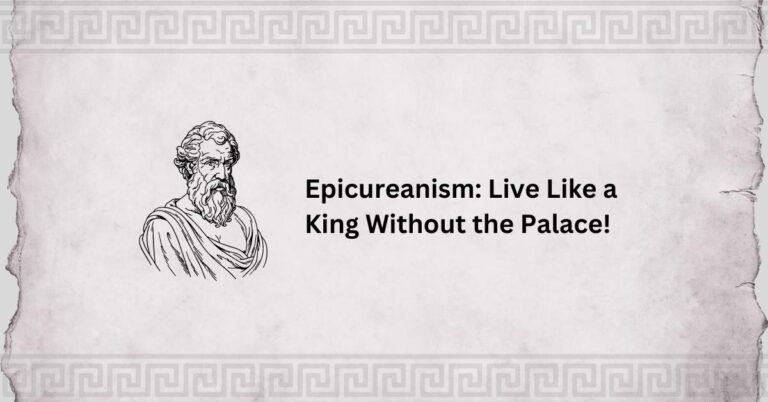Hedonistic Utilitarianism vs Preference Utilitarianism: A Comprehensive Analysis!
Utilitarianism is a big deal in ethical theory. It’s all about making choices that lead to the greatest good. But did you know there are different types of utilitarianism?
Today, we’ll dive into two fascinating subtypes: hedonistic utilitarianism and preference utilitarianism. These theories guide us in making decisions that maximize happiness. Understanding them can help us navigate ethical dilemmas in both everyday life and complex societal issues.
So, why focus on hedonistic utilitarianism and preference utilitarianism? Well, knowing the difference can sharpen our moral compass. It can also help us make better decisions, both for ourselves and for the greater good.
Let’s explore how these philosophies stack up against each other. This journey will enhance your grasp of ethical theory and provide practical insights.
1. What is Utilitarianism?
Utilitarianism is a moral theory that focuses on the outcomes of actions. Its main principle is to maximize happiness and minimize suffering. The right action is the one that produces the greatest overall good.
Jeremy Bentham and John Stuart Mill are key figures in utilitarianism. Bentham introduced the idea of the “greatest happiness principle.” He believed that we should act to bring about the most pleasure and the least pain. Mill expanded on Bentham’s ideas, emphasizing the quality of pleasures, not just the quantity.
Utilitarianism is all about consequences. It doesn’t matter what your intentions are. What matters is the result of your actions. If your actions lead to more happiness than pain, they are considered good.
In a nutshell, utilitarianism teaches us to think about the bigger picture. It’s about making decisions that benefit the most people. Understanding this theory can help us navigate moral choices with a focus on overall well-being.
2. What is Hedonistic Utilitarianism?
Definition and Core Principles
Hedonistic utilitarianism is a type of utilitarianism that places pleasure at the core of ethical decision-making. The main idea is simple: actions are right if they increase pleasure and wrong if they increase pain. Pleasure is seen as the ultimate good, and pain is the ultimate bad.
This approach involves calculating the potential pleasure and pain resulting from different actions. The goal is to choose the action that produces the most net pleasure. It’s a straightforward way of thinking: maximize happiness, and minimize suffering.
Historical Background and Key Proponents
The concept of hedonism dates back to ancient Greece. Epicurus is one of the early proponents. He believed that simple, moderate pleasures lead to a happy life. His philosophy emphasized mental pleasures over physical ones, arguing that a tranquil mind is the greatest source of joy.
Jeremy Bentham, a more recent figure, is crucial to hedonistic utilitarianism. Bentham introduced the idea of the “hedonic calculus.” This is a method for measuring pleasure and pain to determine the best action. He believed that every action could be quantified in terms of its ability to produce pleasure or pain.
Bentham’s ideas were revolutionary. He proposed that all pleasures and pains are measurable and comparable. This means that we can, in theory, make precise calculations to determine the best course of action.
Examples of Hedonistic Utilitarianism in Practice
Let’s consider some real-life examples. Imagine you’re deciding between donating to a local animal shelter or going on a vacation. A hedonistic utilitarian would weigh the pleasure and pain resulting from both actions. If the pleasure of helping animals outweighs the joy of a vacation, donating is the right choice.
Another example is healthcare decisions. Consider a doctor deciding whether to prescribe a painkiller with side effects or a less effective but safer alternative. The hedonistic utilitarian approach would involve evaluating the pleasure (pain relief) against the pain (side effects). The best choice is the one that maximizes overall well-being.
Hedonistic utilitarianism also influences public policy. For instance, policies aimed at reducing smoking are often justified by the pleasure-pain calculus. The immediate pleasure of smoking is outweighed by the long-term pain of health issues, leading to regulations that discourage smoking.
3. What is Preference Utilitarianism?
Definition and Core Principles
Preference utilitarianism shifts the focus from pleasure to the satisfaction of preferences. This theory argues that actions are right if they fulfill the preferences of those affected. It’s not just about pleasure and pain but about what people actually want.
The core principle is that fulfilling preferences leads to the best outcomes. Preferences can include desires, interests, and values. The goal is to make decisions that align with what people prefer, thus maximizing overall satisfaction.
Historical Background and Key Proponents
R.M. Hare and Peter Singer are notable figures in preference utilitarianism. Hare emphasized the importance of considering individuals’ preferences in ethical decisions. He believed that understanding what people want is crucial for making moral choices.
Peter Singer expanded on these ideas. He argued that satisfying preferences is more practical and aligned with real-world ethical dilemmas. According to Singer, preference utilitarianism is more flexible and applicable to complex situations where pleasure and pain are not the only factors.
This approach also addresses some limitations of hedonistic utilitarianism. By focusing on preferences, it considers a broader range of human experiences and desires. This makes it a more comprehensive and realistic ethical theory.
Examples of Preference Utilitarianism in Practice
Consider a democratic decision-making process. When a community decides on a new policy, preference utilitarianism suggests surveying the residents. If most people prefer building a new school over a new park, the school is built. This approach ensures that decisions reflect the preferences of the majority.
In healthcare, preference utilitarianism can guide treatment choices. For instance, a patient may prefer a less aggressive treatment due to quality of life concerns. A preference utilitarian would respect this choice, prioritizing the patient’s preferences over other considerations.
In public policy, preference utilitarianism can be seen in transportation planning. City planners might conduct surveys to understand residents’ preferences for bus routes, bike lanes, or carpooling options. The goal is to design a system that aligns with the community’s desires, ensuring the best possible outcomes for the most people.
4. Key Differences Between Hedonistic and Preference Utilitarianism
Basis of Pleasure vs. Preference Satisfaction
The primary difference between hedonistic and preference utilitarianism lies in their foundational principles. Hedonistic utilitarianism focuses on maximizing pleasure and minimizing pain. It’s all about the sensory and emotional experiences of happiness.
In contrast, preference utilitarianism centers on satisfying individual preferences. This means respecting what people want, even if their choices don’t directly lead to pleasure. It’s about fulfilling desires and interests, which can vary widely among individuals.
Measuring Happiness: Quantitative vs. Qualitative Approaches
Hedonistic utilitarianism often uses a quantitative approach. It seeks to measure pleasure and pain on a common scale, like Bentham’s “hedonic calculus.” This method involves adding up units of pleasure and subtracting units of pain to find the net happiness.
Preference utilitarianism, however, takes a qualitative approach. It doesn’t just count units of happiness but considers the nature and intensity of preferences. Some preferences might be more significant or deeply held than others, making the satisfaction of those preferences more critical.
Ethical Implications and Decision-Making Processes
These differences lead to varied ethical implications. Hedonistic utilitarianism might justify actions that increase overall pleasure, even if they conflict with some individuals’ preferences. For example, a policy that improves public health by banning a popular but harmful substance can be justified if it leads to greater net pleasure.
Preference utilitarianism, on the other hand, would weigh the importance of individual preferences. If a significant number of people strongly prefer to keep the substance legal, a preference utilitarian might argue against the ban. The emphasis is on respecting and fulfilling these preferences.
In decision-making processes, hedonistic utilitarianism tends to focus on outcomes that maximize pleasure. It involves calculating the potential pleasures and pains of various actions to choose the best one. Preference utilitarianism, however, involves understanding and balancing different preferences. Decisions are made based on which actions satisfy the most important and widespread preferences.
5. Similarities Between Hedonistic and Preference Utilitarianism
Both Are Consequentialist Theories
Hedonistic and preference utilitarianism share a key characteristic: they are both consequentialist theories. This means they judge actions based on their outcomes. The morality of an action is determined by its consequences, not by the intentions behind it.
Both Aim to Maximize Utility
Despite their different approaches, both types of utilitarianism aim to maximize utility. For hedonistic utilitarians, this means maximizing pleasure and minimizing pain. For preference utilitarians, it means maximizing the satisfaction of preferences.
In both cases, the goal is to achieve the greatest good. They seek to improve well-being, whether through increasing happiness or fulfilling desires. This shared aim highlights their common ground.
Shared Focus on Outcomes and Well-being
Both philosophies place a strong emphasis on outcomes and overall well-being. They evaluate actions based on how much they contribute to a positive state of affairs. This focus on results makes them practical and applicable to real-world ethical dilemmas.
In summary, while hedonistic and preference utilitarianism differ in their focus—pleasure vs. preferences—they share the same consequentialist foundation. Both aim to enhance well-being through thoughtful consideration of outcomes. This common ground provides a basis for understanding and applying these ethical theories in various contexts.
6. Practical Applications of Hedonistic and Preference Utilitarianism
Real-life Examples Where Hedonistic Utilitarian Principles Are Applied
Hedonistic utilitarianism often influences personal lifestyle choices. Imagine someone choosing to spend their free time at a spa, indulging in relaxation. The decision is driven by the pursuit of pleasure and avoidance of pain, aligning with hedonistic principles.
Another example is public health initiatives. Consider a government campaign to reduce smoking. The aim is to minimize the pain caused by smoking-related illnesses and maximize the pleasure of healthier living. Here, the focus is on the net pleasure resulting from reduced health risks.
Real-life Examples Where Preference Utilitarian Principles Are Applied
Preference utilitarianism is evident in democratic decision-making. For instance, when a community votes on whether to build a new park or a library, preference utilitarianism would guide the decision based on what the majority prefers. The chosen option reflects the preferences of the most satisfied.
In healthcare, preference utilitarianism can guide treatment choices. If a patient prefers a less aggressive treatment due to quality of life concerns, this preference would be respected. The decision prioritizes the patient’s desires, even if the treatment isn’t the most pleasurable option.
Comparative Analysis of Outcomes in Various Scenarios
Let’s compare the two in a business setting. A company deciding on employee benefits could use hedonistic utilitarianism to offer perks like free snacks and recreational activities, aiming to increase immediate happiness. Preference utilitarianism, however, might focus on benefits like flexible working hours or professional development opportunities, aligning with employees’ preferences for long-term satisfaction.
In public policy, consider the approach to urban development. A hedonistic utilitarian might support building entertainment centers to increase immediate pleasure. A preference utilitarian would instead survey residents and build facilities that meet their needs, such as schools or parks, ensuring that the most significant preferences are satisfied.
7. Criticisms and Challenges
Common Criticisms of Hedonistic Utilitarianism
Hedonistic utilitarianism often faces criticism for promoting ethical egoism. Critics argue that focusing solely on pleasure can lead to selfish behavior, and ignoring the well-being of others. Another criticism is the oversimplification of pleasure, reducing complex human experiences to mere pleasure and pain calculations.
To address these critiques, proponents of hedonistic utilitarianism emphasize balanced and socially responsible pleasure. They advocate for pleasures that do not harm others and promote overall well-being, aiming for a more nuanced understanding of happiness.
Common Criticisms of Preference Utilitarianism
Preference utilitarianism also has its challenges. One major criticism is the subjectivity of preferences. What one person prefers might be vastly different from another’s, making it hard to determine the most ethical action. Additionally, measuring and comparing preferences can be complex and imprecise.
Supporters of preference utilitarianism respond by emphasizing the importance of understanding and respecting individual differences. They argue that considering preferences leads to more inclusive and democratic decision-making. By acknowledging the diversity of human desires, preference utilitarians strive for a fairer approach to ethics.
How Each Philosophy Addresses Its Critiques
Hedonistic utilitarianism addresses its critiques by promoting a balanced pursuit of pleasure. Epicurean hedonism, for example, advocates for simple, moderate pleasures that contribute to long-term happiness without causing harm. This approach seeks to refine the hedonistic calculus to account for the broader impact of actions.
Preference utilitarianism tackles its challenges by developing methods to better understand and weigh preferences. Techniques such as surveys and public consultations help gather comprehensive data on what people value. This information is then used to make decisions that reflect the collective preferences, aiming for the most satisfactory outcomes.
8. Integrating Hedonistic and Preference Utilitarianism
Can They Be Combined? Exploring Hybrid Approaches
Combining hedonistic and preference utilitarianism can create a more robust ethical framework. A hybrid approach would consider both the pleasure resulting from actions and the satisfaction of preferences. This dual focus can provide a more comprehensive view of well-being.
For instance, a healthcare decision might use hedonistic principles to ensure treatments are not painful and preference principles to respect patients’ choices. This approach balances immediate comfort with long-term satisfaction.
Benefits and Challenges of Integrating Both Philosophies
The main benefit of integrating both philosophies is a richer understanding of human well-being. By considering pleasure and preferences, decisions can address both immediate happiness and deeper desires. This leads to more holistic and satisfying outcomes.
However, challenges include the complexity of balancing these two aspects. It requires careful consideration and sometimes compromises between what brings pleasure and what fulfills preferences. Ensuring that both elements are adequately weighed can be demanding.
Real-world Examples of Integrated Approaches
One real-world example is urban planning. Planners might use hedonistic principles to create enjoyable public spaces while also surveying residents to ensure the spaces meet their preferences. This approach ensures the city is both enjoyable and functional for its inhabitants.
In education, schools might incorporate hedonistic principles by making learning enjoyable and engaging. At the same time, they consider students’ preferences for certain subjects or activities. This dual approach can create a more positive and effective learning environment.
Conclusion
Hedonistic and preference utilitarianism offer distinct but complementary approaches to ethical decision-making. Hedonistic utilitarianism emphasizes maximizing pleasure and minimizing pain, providing a straightforward way to evaluate actions based on their immediate emotional outcomes. Preference utilitarianism, on the other hand, focuses on satisfying individual preferences, offering a nuanced understanding of well-being that respects personal desires and values.
Understanding both philosophies enriches our perspective on ethics. It allows us to balance immediate happiness with long-term satisfaction and consider both individual and collective well-being. By integrating these approaches, we can make more informed and balanced decisions in various aspects of life, from personal choices to public policies.
FAQs
What is the main difference between hedonistic utilitarianism and preference utilitarianism?
The main difference lies in their focus. Hedonistic utilitarianism is centered on maximizing pleasure and minimizing pain. Preference utilitarianism, however, prioritizes fulfilling individual preferences, even if they don’t directly lead to pleasure.
Can hedonistic utilitarianism and preference utilitarianism be integrated?
Yes, they can be integrated. A hybrid approach considers both the pleasure resulting from actions and the satisfaction of preferences. This dual focus can provide a more comprehensive view of well-being and lead to more balanced ethical decisions.
Which philosophy is more practical in today’s world?
Both philosophies have practical applications, but their suitability depends on the context. Hedonistic utilitarianism is useful for decisions involving immediate pleasure and pain, such as personal lifestyle choices. Preference utilitarianism is more applicable to complex decisions where individual preferences play a significant role, like public policies and healthcare decisions.
How do these theories impact personal and societal decision-making?
Hedonistic utilitarianism impacts personal decisions by encouraging actions that maximize personal happiness and minimize suffering. Preference utilitarianism influences societal decisions by prioritizing the fulfillment of people’s preferences, leading to more democratic and inclusive outcomes. Both theories offer valuable insights that can guide ethical decision-making in various contexts, promoting overall well-being and satisfaction.




